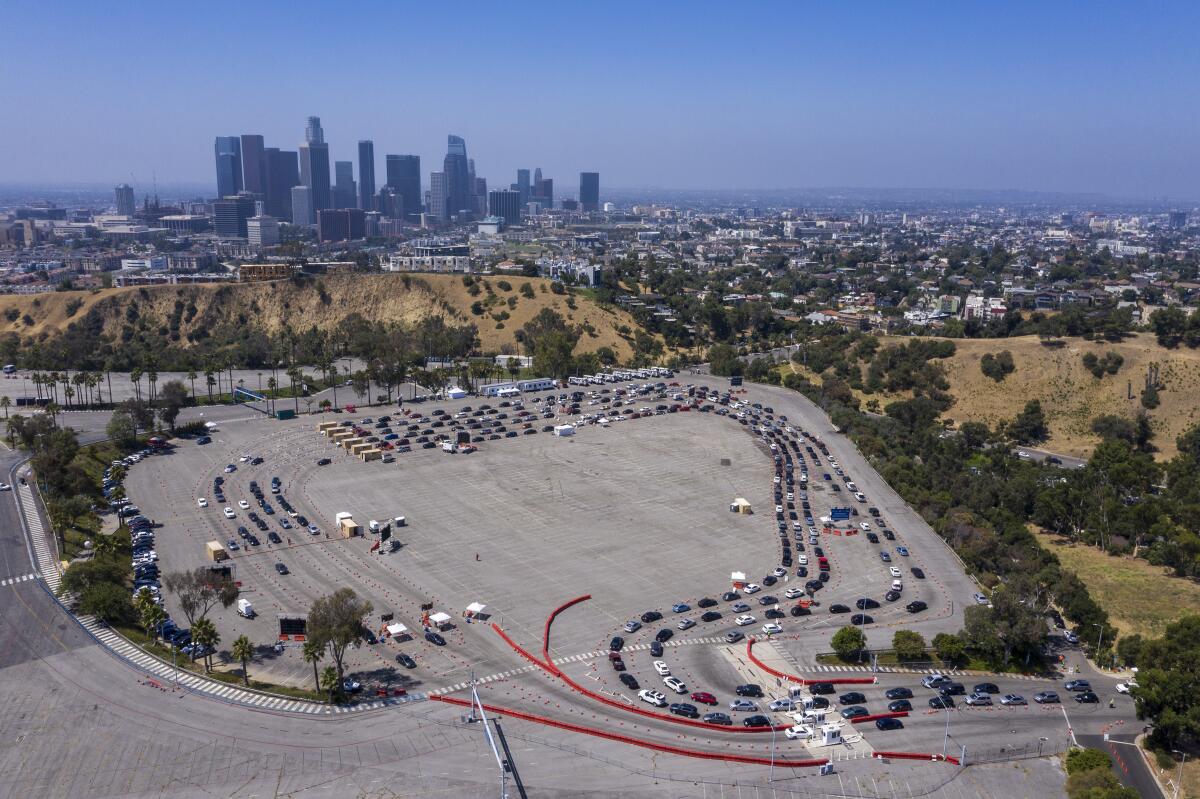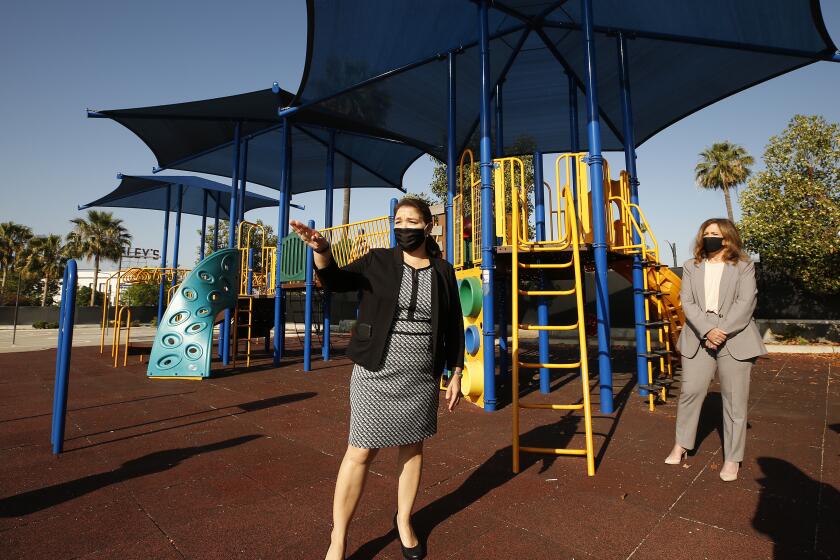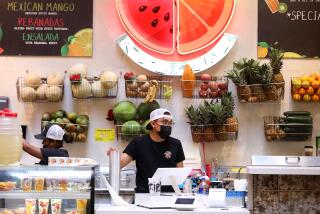With demand soaring, L.A. County narrows priority for who should get coronavirus tests

As the demand for coronavirus testing has become greater than the supply in Los Angeles County, officials are shifting their recommendations on who should get tested.
In the weeks since Memorial Day, when Los Angeles County reopened businesses and protests erupted over the death of George Floyd, officials encouraged all individuals to get tested, especially those who had visited any large gatherings or participated in a protest. That included possible asymptomatic carriers, who officials have said could be silent spreaders of the disease.
Now, public health officials say priority for testing is being placed on those who are showing symptoms, work in a high-risk environment or have come in contact with a person known to have been exposed to the virus.
L.A. County officials have said that testing capacity is continuing to expand, but limited availability has stymied those seeking to be tested for weeks.
“The mismatch of demand has become more apparent,” Health Services Director Dr. Christina Ghaly said Wednesday. “We have to watch the supply chain.”
The shift comes as officials report a troubling surge in people infected with COVID-19. On Wednesday, L.A. County Public Health Director Barbara Ferrer said the county is at a “critical juncture,” noting that people fed up with the extended stay-at-home order who have tried to return to a pre-pandemic way of life have contributed to the increased spread of the illness in Southern California.
Officials said that 1 in 140 people in L.A. County are unknowingly infected with the virus. Residents — both asymptomatic and those with symptoms — have been clamoring for appointments and waiting days for test results, if they are able to get a test at all.
Public and private schools must prepare for students to continue learning remotely, L.A.County public health director tells superintendents.
In addition to the shift in testing protocol, health officials are also recommending that individuals quarantine for 14 days after a possible exposure to the virus, even if they have received a negative test result during that time. False negatives typically occur when a person gets tested too soon after a possible exposure, when a viral load would be unable to be detected, health officials said. But there is no clear guidance on how long a person should wait to get tested.
“A negative test is not a free pass to engage in social activities,” Ghaly said.
Officials say the limited availability of tests is not caused by a lack in funding or a shortage in resources, but rather a matter of demand and time.
Ann Lee — the co-founder of the nonprofit organization Community Organized Relief Effort, or CORE, which oversees testing at Dodger Stadium and five other locations in Los Angeles — said it can take about two weeks to launch a new testing site capable of serving 2,500 people. The process would require a city or county to procure and lease a location. A company such as CORE would then have to hire and train people to conduct tests and obtain enough personal protective equipment to outfit its healthcare workers.
“It’s a function of staffing up,” Lee said.
More than 1 million tests have been distributed in Los Angeles County, which has confirmed more than 123,000 infections, while the seven-day average for the positivity rate — those who test positive for the virus — has climbed past 10%.
More to Read
Sign up for Essential California
The most important California stories and recommendations in your inbox every morning.
You may occasionally receive promotional content from the Los Angeles Times.













